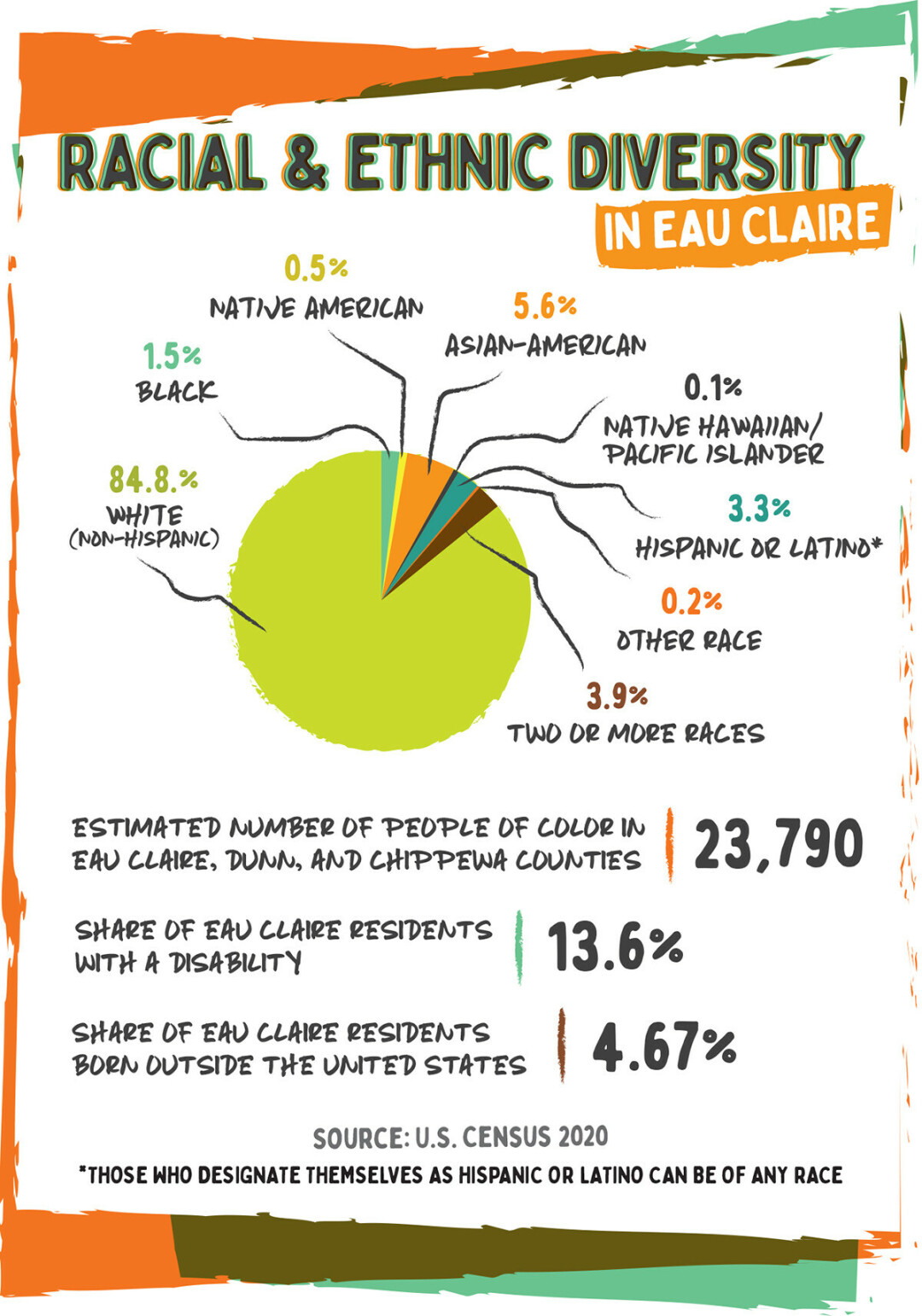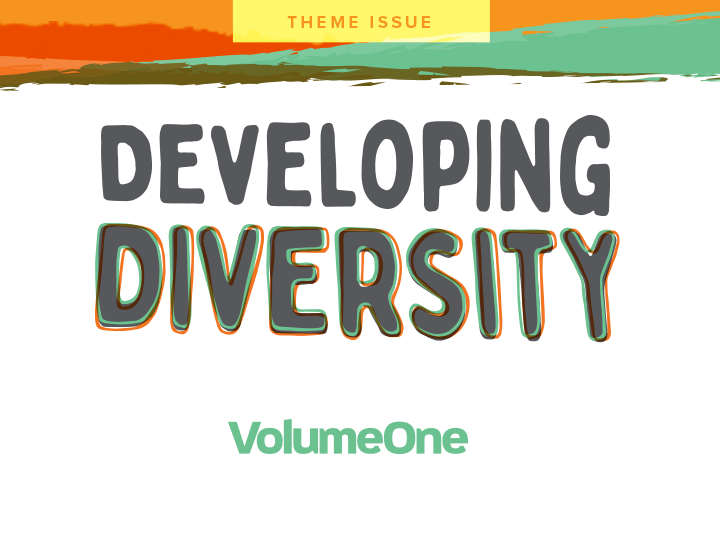How Diverse Are We? A Look at the Numbers
U.S. census offers a glimpse of Chippewa Valley’s racial and ethnic makeup

So how diverse is the Chippewa Valley, anyway? As we wrote when we first asked that question in these pages four years ago, the answer depends on your perspective – and your definition of diversity.
Figures for the racial and ethnic background of Chippewa Valley residents are relatively easy to track down, courtesy of the U.S. Census Bureau. They show a region that is gradually growing more diverse, but that (unsurprisingly) remains largely white.
Walk down the street in the City of Eau Claire and about 85% percent of the people you’ll see will be white, according to the 2020 census. Nonetheless, the figure has changed over the years: In the 2000 census, for instance, the city was more than 93% white.
In the 2020 headcount, roughly 15% of the city’s population of 69,421 were considered people of color – whether that’s Black, Asian-American, Native American, some other race, or a mixture of two or more races. This share also includes people who describe themselves on the census form as Hispanic. (The Census Bureau treats Hispanic origin as a heritage, nationality, or lineage, not a race, so Hispanic people may describe themselves as of any race.)
Considering the decades-long influx of Hmong refugees to the Chippewa Valley, the relatively large number of Asian-Americans in Eau Claire and the surrounding area isn’t a surprise. At nearly 6% of the city’s population – or nearly 4,000 people – Asian-Americans are the second-largest group in town. While it’s a fair guess that most of these people are Hmong, the 2020 census doesn’t actually ask about the specifics of national origin (and the surveys that do date back to 2015). For the sake of comparison, Wisconsin as a whole is just 3% Asian, according to the 2020 census.
According to the 2020 census, the population of Chippewa, Dunn, and Eau Claire counties together 89% white. And yet that 11% share equals nearly 24,000 individuals – a number larger than the total population of either Menomonie or Chippewa Falls.
On the whole, however, Eau Claire and the Chippewa Valley are more white than the entire state and nation: Wisconsin is 78.6% non-Hispanic white, while the United States is about 57.8% non-Hispanic white – down from 63.7% in 2010.
Looking at the Chippewa Valley as a whole, the total number of people of color grows, but the percentages of individual groups decline. To put it more bluntly, the rest of the Chippewa Valley outside Eau Claire is whiter than Eau Claire itself. According to the 2020 census, the population of Chippewa, Dunn, and Eau Claire counties together 89% white. This shouldn’t be a surprise: Nationwide, urban centers tend to be more diverse than rural areas. And yet that 11% share equals nearly 24,000 individuals – a number larger than the total population of either Menomonie or Chippewa Falls.
Across western Wisconsin, demographic shifts have created pockets of diversity in communities that were once homogeneous. Consider Arcadia: More than 2,300 of this city’s 3,700 inhabitants are Hispanic, according to the latest census. In fact, there are more Hispanic residents in Arcadia than there are in Eau Claire, which is nearly 20 times larger! Meanwhile, because of an influx of Somali immigrants, more than 17% of Barron residents have African ancestry. While these communities remain the exception rather than the rule in western Wisconsin, they are representative of nationwide shifts.
The changing racial and ethnic makeup of the Chippewa Valley is most clearly visible in public schools. According to the Wisconsin Department of Public Instruction, more than one-quarter of Eau Claire Area School District students were people of color in the 2021-22 school year. (The figure was 25.1%, to be exact.) Nearly 10% of the district’s students were Asian-American, while more than 6% were Hispanic. Dialing back a decade to the 2011-12 school year finds that less than 20% of students were people of color.
Again, such trends are reflected – and even amplified – nationwide: According to the 2020 census, no racial or ethnic group holds a majority among the U.S. population under 18. Among that group, 47.3% were non-Hispanic white, compared with 53.5% a decade earlier.
The future, it seems, will be more diverse than ever.

